What is GPEdit.Msc (Group Policy Editor)? How to use GPEdit to configure a computer
If you are a person who does not like to sit still, like playing around with components on hardware, computer software, you've probably been playing in the Group Policy Editor. This is one of the interesting Windows extensions that support users to fine tune the operating system. In this article, Software Tips will help you understand more about Group Policy Editor.
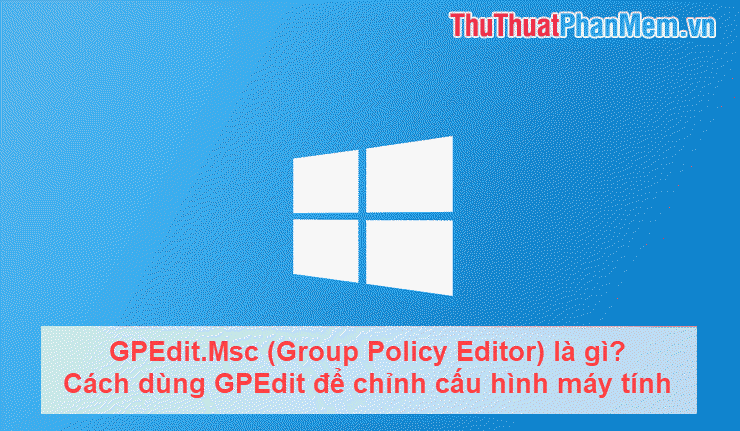
A. What is GPEdit.Msc (Group Policy Editor)?
GPEdit.Msc - This is a command to support the user can open the Group Policy Editor on their computer. You cannot access the Group Policy Editor without the above command. What about the Group Policy Editor? Group Policy Editor is a tool to help you customize the operating system on your computer directly. The Group Policy Editor supports a lot of interesting things: Disable Windows Update, disable Cortana, Disable firewall, . Almost everything that is available on Windows, the Group Policy Editor can intervene.

Group Policy Editor is available on all versions of Windows (Except Windows 10 Home).
If you do not like using codes, the Group Policy Editor will be the best choice for you. The choices in the Group Policy Editor are only Enable, Disable, and Auto. You just select and Save is done.
The Group Policy Editor supports users to batch edit Registry files on the computer quickly and conveniently. Users can download other optimized versions of the Registry to their computer to improve performance.
B. How to use GPEdit to configure a computer
If you need to configure your computer on GPEdit, then you need a lot of time to learn and tweak it to suit your needs. In this article, the Software Tips will introduce you the most basic about GPEdit and some useful options on GPEdit to configure your computer.
I. How to access GPEdit
Method 1: Direct access from RUN window
You press Windows + R to open the RUN window and enter the command GPEdit.Msc .
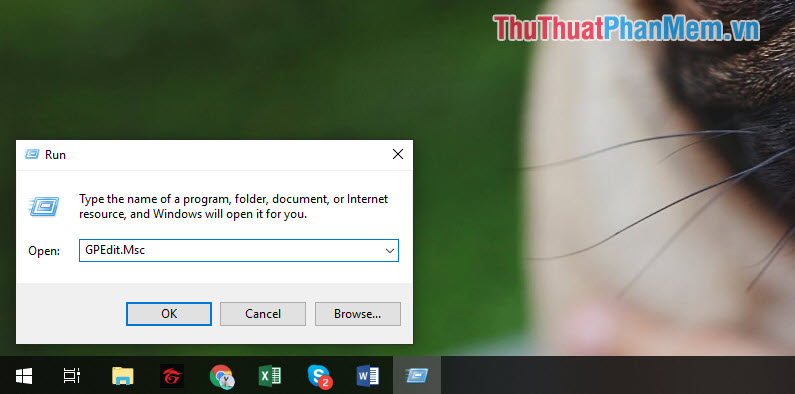
Method 2: Access directly on the Start bar
Enter the Edit group policy into the search bar and press Enter to open it.
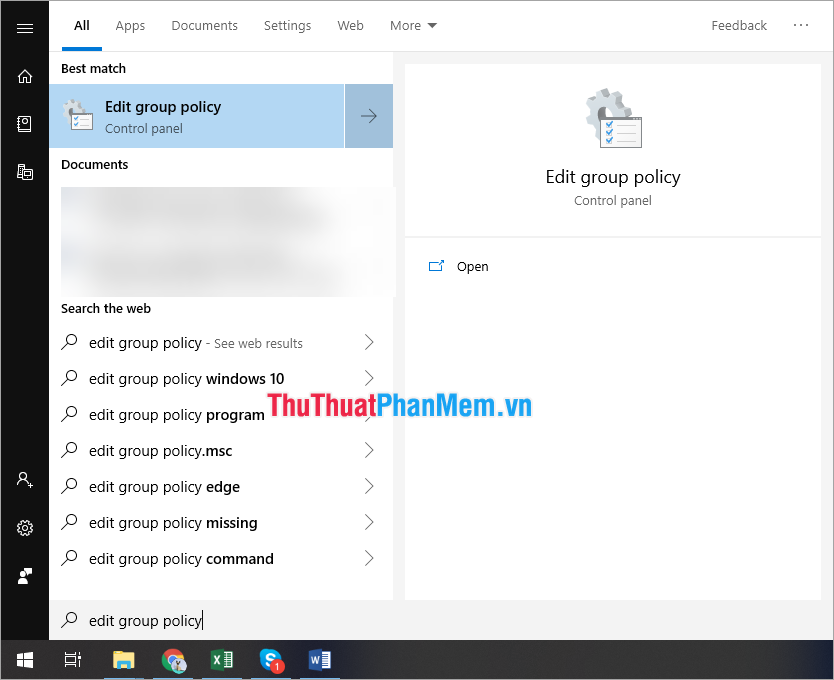
II. The information in GPEdit
When the Local Group Policy Editor window appears. Here are the main parts you need to care about:
- Computer Configuration: Computer edits (All accounts)
- Use Configuration: Edits about individual user accounts (Accounts are logged in
Inside the two main parts up there will be 3 subsections:
- Software Settings: The editing options are related to the software on the computer.
- Windows Settings: Security settings, Script related to login / logout / turn off the computer.
- Administrative Templates: Computer configurations (Based on the Registry). You go here to tweak the Registry on the computer quickly.
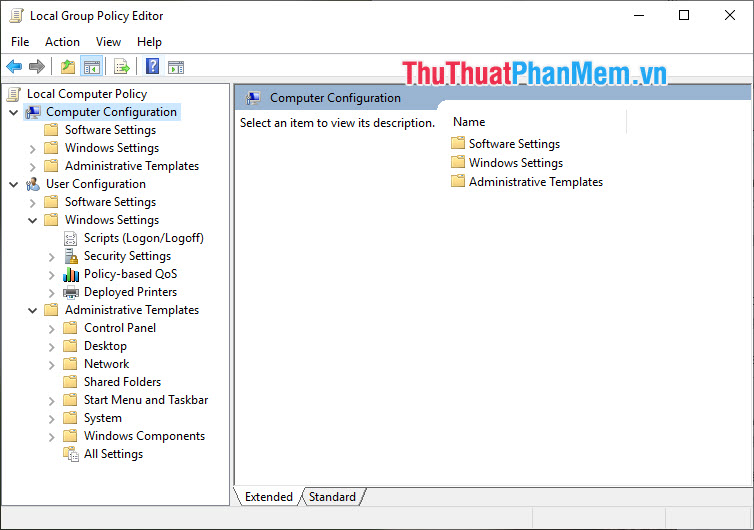
III. Fine-tune computer configuration with GPEdit
1. Prevent access to Control Panel
If your computer is a shared computer and you are afraid that someone will go to the custom Control Panel to mess around with it, this way will restrict access to the Control Panel with strangers.
Steps to block access to the entire Control Panel:
User Configuration => Administrative Templates => Control Panel => Prohibit access to Control Panel and PC Settings => Enable => Apply .
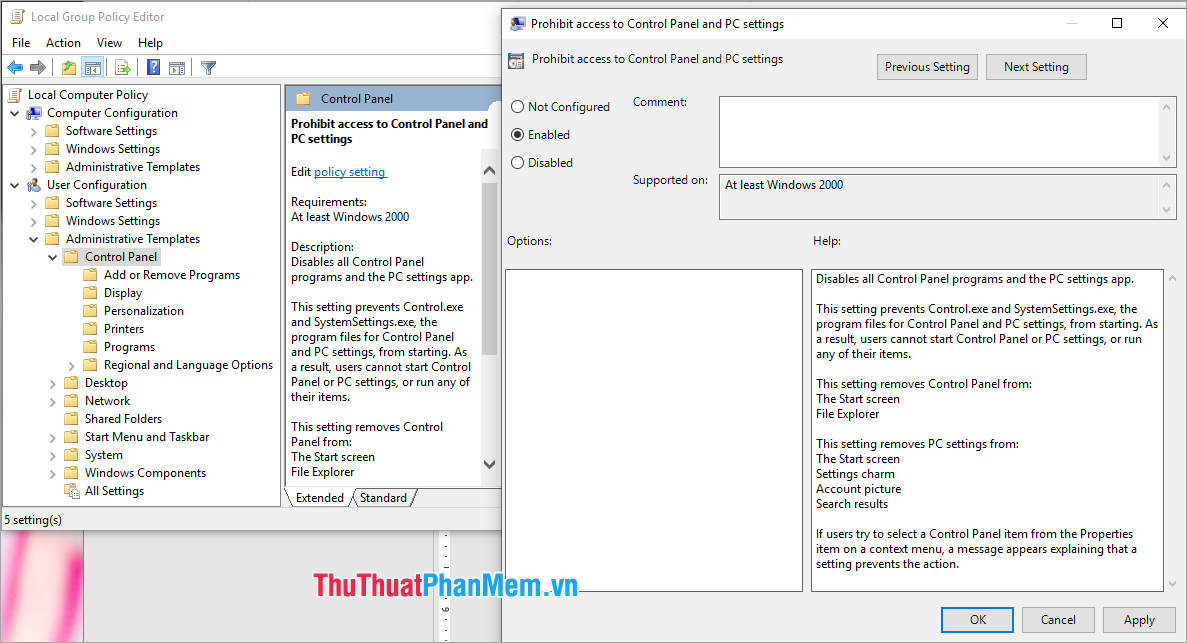
Steps to block access to some Control Panel sections:
User Configuration => Administrative Templates => Control Panel => Hide specified Control Panel items => Enable => Apply .
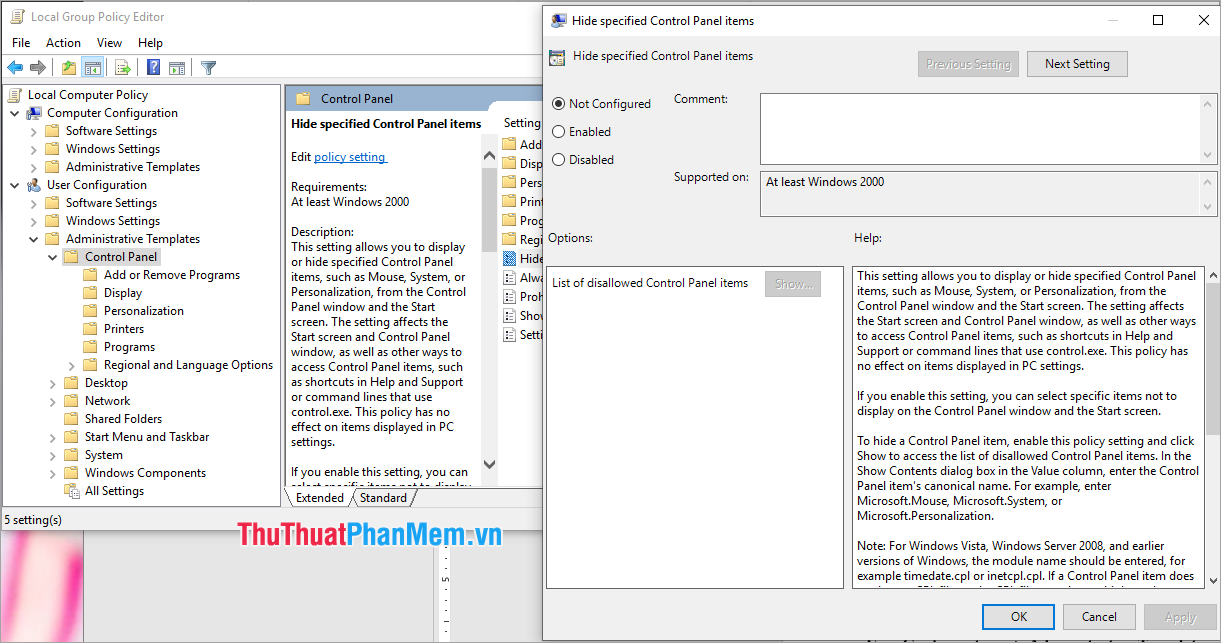
2. Disable OneDrive
OneDrive is an available software and is deeply integrated into the operating system of Windows 10. You can turn off OneDrive through GPEdit.
To turn off OneDriver, do the following:
Computer Configuration => Administrative Templates => Windows Components => OneDrive => Prevent the usage of OneDrive for file storage => Enable => Apply .

3. Turn off Restart request when Update Windows
Every time we update Windows, the system will ask you to restart your computer. This feature can be turned off.
To stop Restart after Windows Update is finished:
Computer Configuration => Administrator Templates => Windows Components => Windows Update => No auto-restart with logged on users for scheduled automatic update installations => Enable => Apply .

4. Turn off flat notifications
With Windows 10, notifications are converted to a flat form at the bottom of the screen. Like notifications on mobile devices, but notifications on Windows 10 sometimes annoy us when playing games. This way you can also turn off notifications on Windows 7/8.
Windows 7 / XP:
User Configuration => Administrative Templates => Start Menu and Taskbar => Turn off all balloon notifications => Enable => Apply .
Windows 8/10:
User Configuration => Administrative Templates => Start Menu and Taskbar => Notifications => Turn off toast notifications => Enable => Apply .

5. Turn off Windows Defender Virus removal software
Windows Defender is a powerful antivirus software on Windows today. But Windows Defender often detects errors so you can turn it off according to your needs.
How to turn off Windows Defender:
Computer Configuration => Administrative Templates => Windows Components => Windows Defender AntiVirus => Turn off Windows Defender AntiVirus => Enable => Apply .
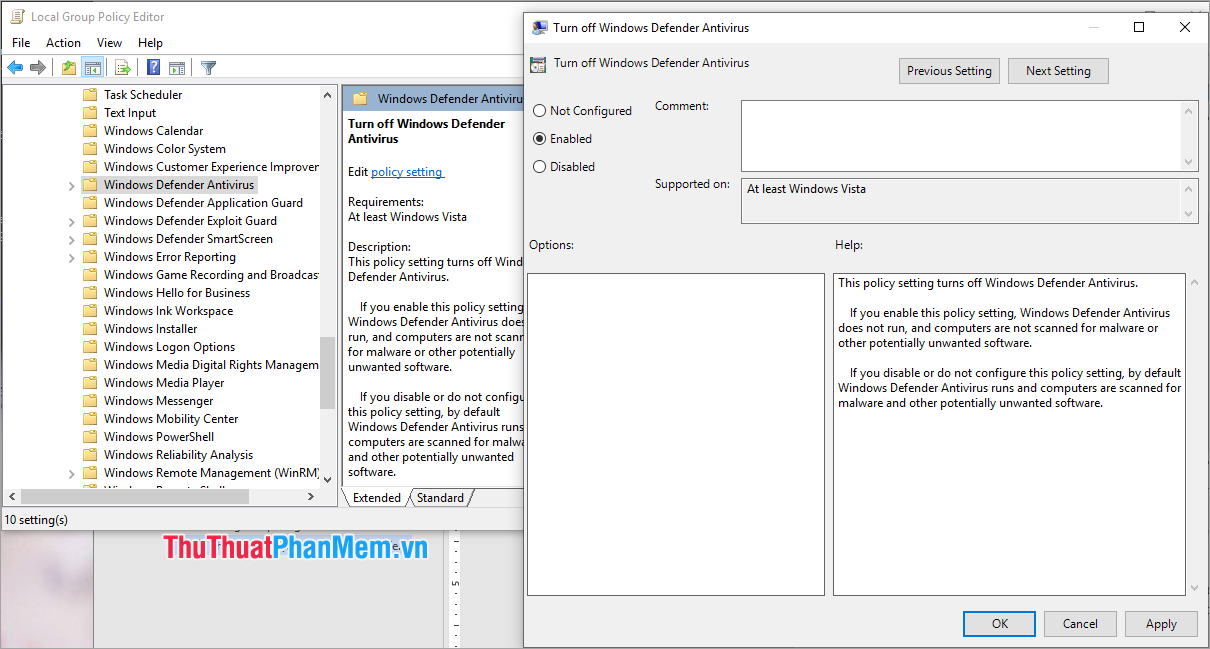
6. Block the installation of new software on the system
If you lend your computer and are afraid of other people installing strange and unknown applications on your computer, you can use this method.
How to block the software installation:
Computer Configuration => Administrative Templates => Windows Components => Windows Installer => Turn off Windows Installer => Enable => Apply .
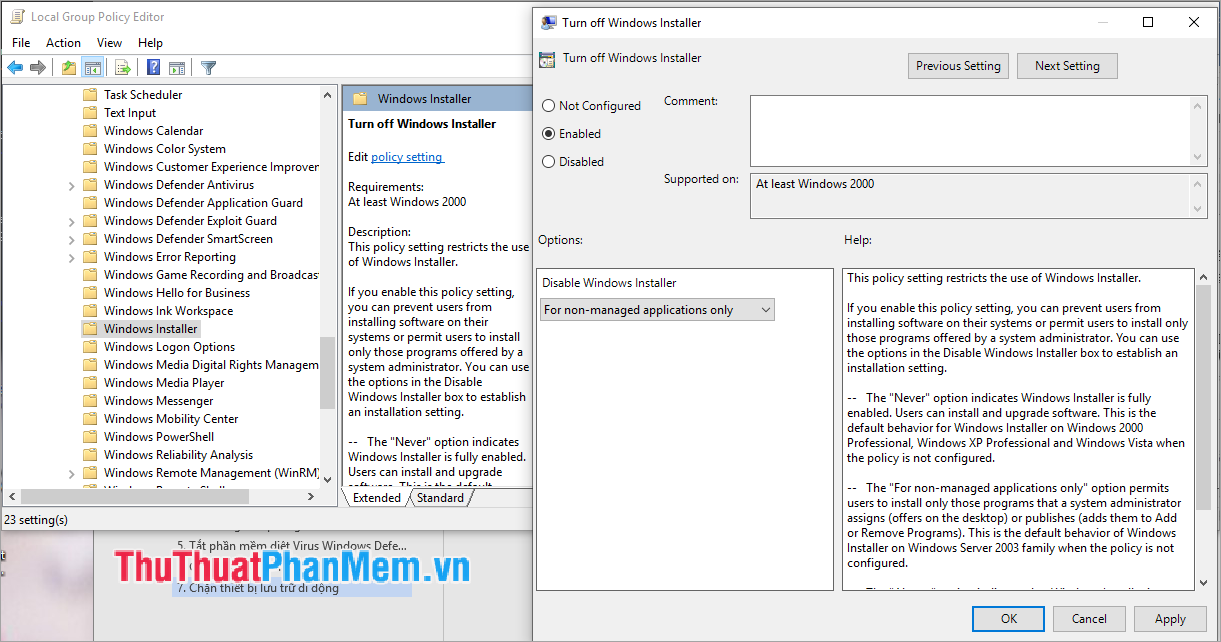
7. Block removable storage device
Mobile storage devices are common today, but they can also be the cause of your computer being infected with Virus.
How to block removable storage devices, peripherals:
User Configuration => Administrative Templates => System> Removable Storage Access => Removable Disks: Deny read access => Enable => Apply .

8. Turn off Command Prompt and Windows Registry Editor
If you are afraid of someone going to CMD and Registry to edit affecting your computer, you can temporarily turn them off.
How to turn off CMD and Windows Registry Editor:
User Configuration => Administrative Templates => System => Prevent access to the command prompt and Prevent access to registry editing tools => Enable => Apply .
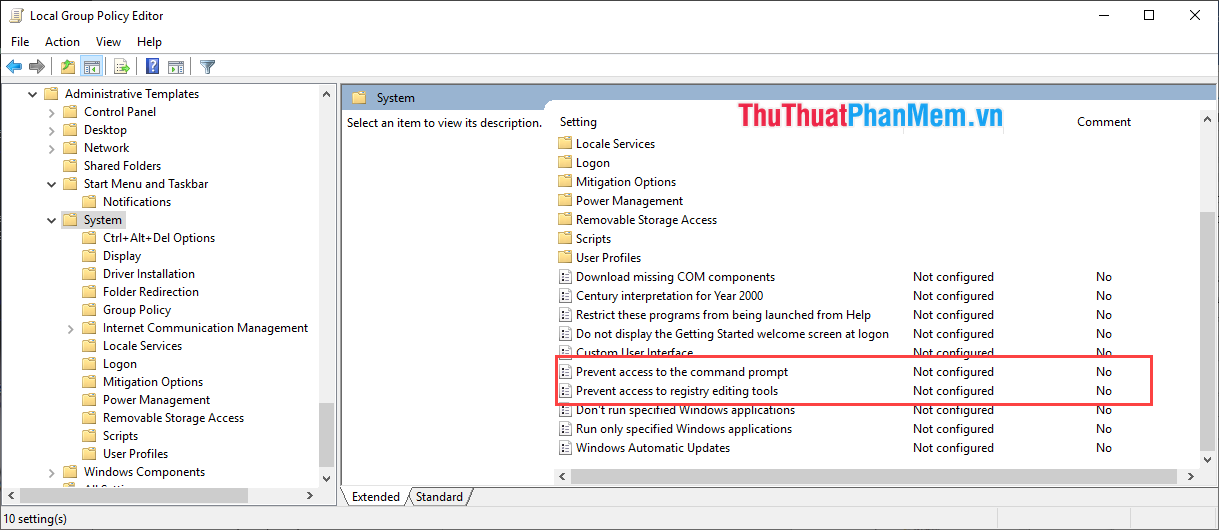
9. Edit Taskbar and Start Menu
This is a feature that supports you to customize the toolbar on your computer quickly.
How to edit:
User Configuration => Administrative Templates => Start Menu and Taskbar .
There are a lot of options here, find the things you want to edit to fix. Besides the edits the manufacturer has annotated the content of the edit for you.
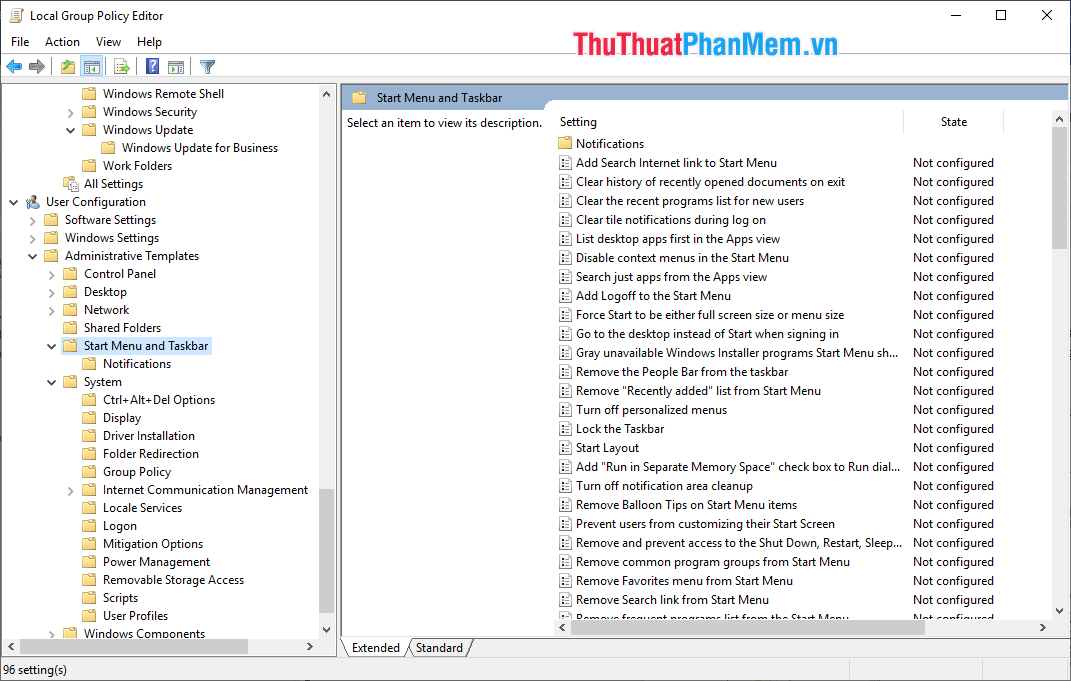
10. Turn off Consumer Experience
Consumer Experience is a tool that Microsoft uses to collect Windows user data to adjust ads on the Start Menu.
How to turn off Consumer Experience:
Computer Configuration => Administrative Templates => Windows Components => Cloud Content => Turn off Microsoft consumer experiences => Enable => Apply .
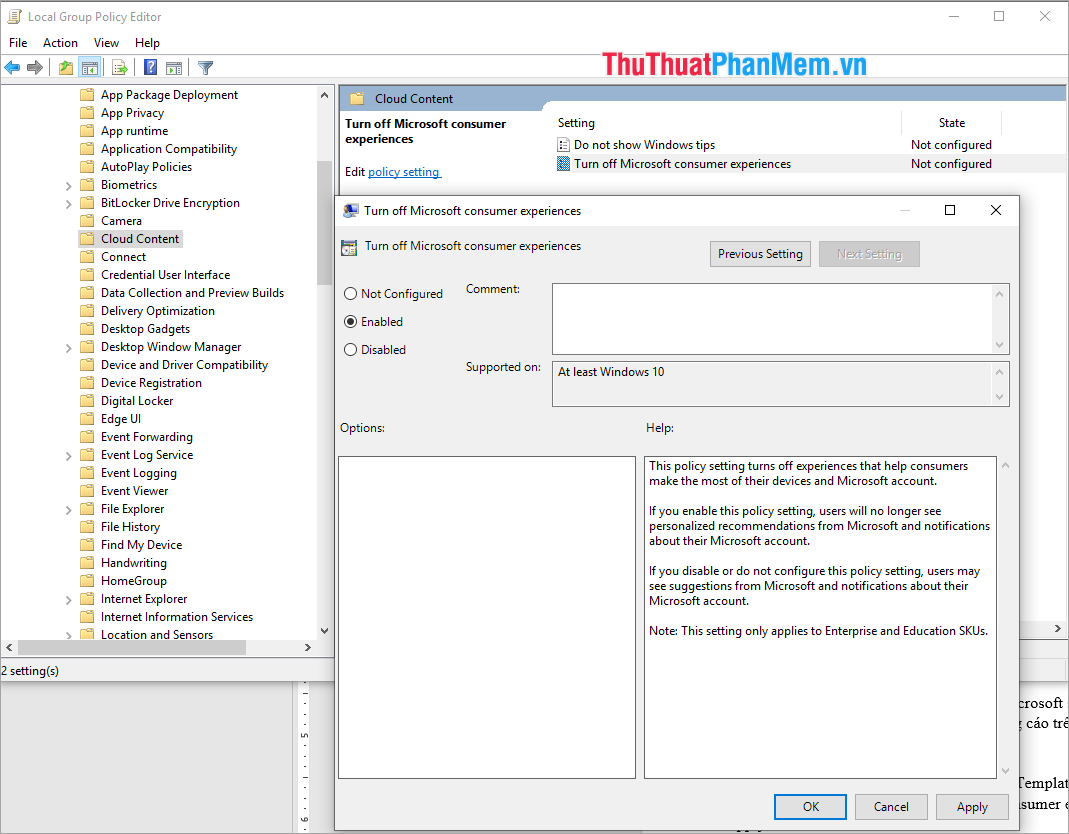
In this article, Software Tips introduced you to GPEdit. You can learn more to tweak your computer accordingly. Good luck!
You should read it
- Can't run gpedit.msc command on Win 10 + Win 11, how to fix it?
- How to use Local Group Policy Editor to tweak your computer
- 4 tips to open Local Group Policy Editor on Windows 8 / 8.1
- Configure App-V with Group Policy Objects
- 8 'tweak' Windows Group Policy any Admin should know
- 10 important Windows Group Policy settings need to be done immediately
- How to Make Windows 8 Move Deleted Favorites to the Recycle Bin Instead of Deleting Them
- How to install the Microsoft Edge Group Policy template on Windows 10
May be interested
- 10 important Windows Group Policy settings need to be done immediately
 configure the 10 group policy below carefully and enjoy better windows security for your computer.
configure the 10 group policy below carefully and enjoy better windows security for your computer. - How to install the Microsoft Edge Group Policy template on Windows 10
 on windows 10, you can download and install group policy templates to manage microsoft edge settings, and this guide will show you the process.
on windows 10, you can download and install group policy templates to manage microsoft edge settings, and this guide will show you the process. - How to view all applied Group Policies in Group Policy Editor
 if you need to know what policies are applied in windows, here is a simple way to see all applied group policies in the group policy editor.
if you need to know what policies are applied in windows, here is a simple way to see all applied group policies in the group policy editor. - Don't waste money on Windows 11 Pro unless you need this feature!
 having a tool that packs so many useful functions into a single convenient menu makes this the single reason why you should consider using windows 11 pro.
having a tool that packs so many useful functions into a single convenient menu makes this the single reason why you should consider using windows 11 pro. - Fixed an issue that could not replace Windows 10 desktop wallpaper with Group Policy
 if you try to change the desktop background with local group policy editor on windows 10 but fails, here is another solution.
if you try to change the desktop background with local group policy editor on windows 10 but fails, here is another solution. - Hide Control Panel on Windows 10 using Group Policy
 want to prevent others from changing settings on windows 10? this guide will help you disable control panel using group policy editor and registry editor, ensuring effective system security.
want to prevent others from changing settings on windows 10? this guide will help you disable control panel using group policy editor and registry editor, ensuring effective system security. - Use Group Policy Filtering to create a NAP DHCP enforcement policy - Part 1
 how to use group policy to control the implementation of dhcp network access policies, improves the level of performance so that dhcp can be enforced on nap clients.
how to use group policy to control the implementation of dhcp network access policies, improves the level of performance so that dhcp can be enforced on nap clients. - Configure advanced IE settings with Group Policy
 in this article, i will show you the advanced security settings in ie and do so to best configure them.
in this article, i will show you the advanced security settings in ie and do so to best configure them. - Install the printer using Group Policy Object
 in the following article, we will show you how to install the printer using group policy object. in essence, this process is not too complicated and difficult, but just follow the process. first, open the group policy control panel, edit the policy m & agra component directly
in the following article, we will show you how to install the printer using group policy object. in essence, this process is not too complicated and difficult, but just follow the process. first, open the group policy control panel, edit the policy m & agra component directly - How to apply Group Policy only to non-administrators in Windows 10
 if you want to apply a policy to a specific user, read the following article to learn how to do it.
if you want to apply a policy to a specific user, read the following article to learn how to do it.










 How to turn off the software, the application is hanging on the computer
How to turn off the software, the application is hanging on the computer How to recover deleted files permanently in the trash
How to recover deleted files permanently in the trash Ways to take screenshots in Windows 8 extremely fast and simple
Ways to take screenshots in Windows 8 extremely fast and simple How to transfer Windows operating system to a new hard drive (from HDD to SSD)
How to transfer Windows operating system to a new hard drive (from HDD to SSD) How to convert a GPT hard drive format to an MBR while installing Win with the CMD command
How to convert a GPT hard drive format to an MBR while installing Win with the CMD command How to convert an MBR hard drive to a GPT disk using the CMD Diskpart command
How to convert an MBR hard drive to a GPT disk using the CMD Diskpart command